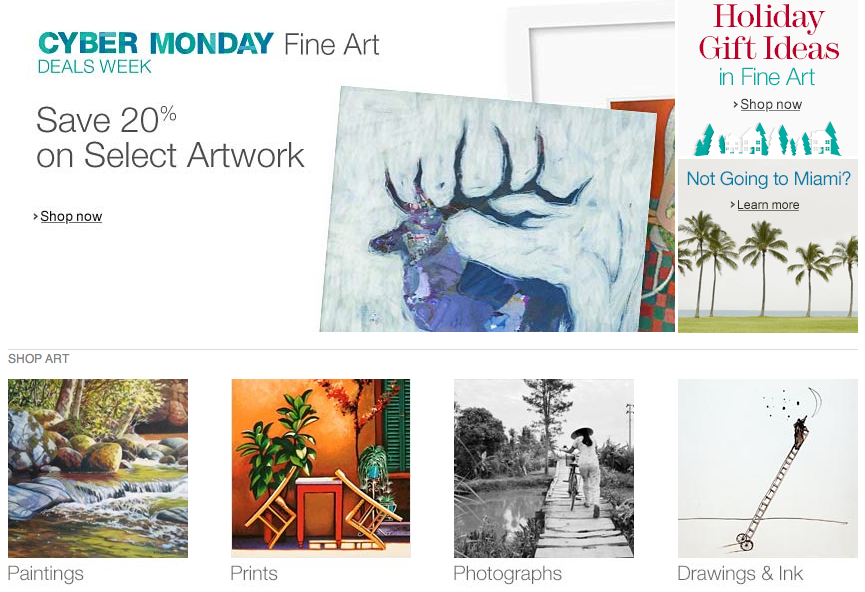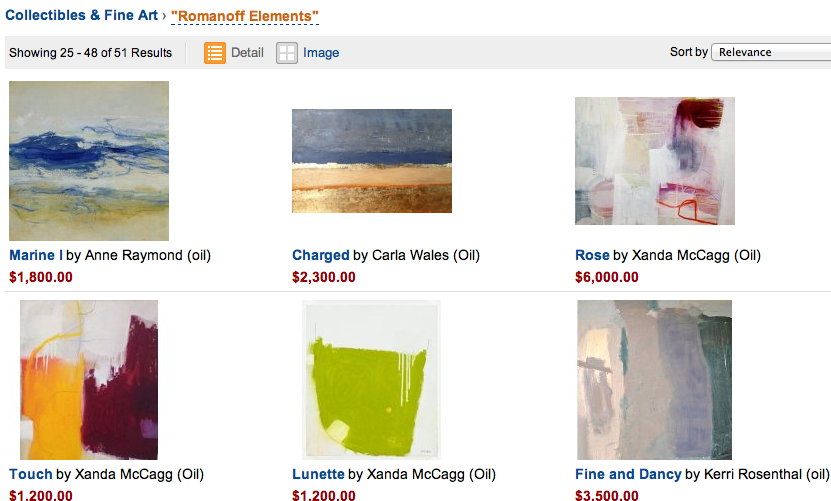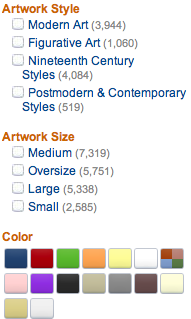"Amazon prides itself on disrupting the traditional way of doing things". This was Charlie Rose's introduction to his recent 60 Minutes interview with Jeff Bezos, founder and CEO of Amazon. The question many in the art world are asking is whether Amazon will disrupt the way business has traditionally been done in their industry.

dis·rupt \dis-ˈrəpt\: to cause (something) to be unable to continue in the normal way : to interrupt the normal progress or activity of (something)
The fact that this question is being asked seems to tell the answer. Since the launch of Amazon Art in August there has been lots of conversation, pro and con as to whether the world's largest online retailer can be successful selling art.
Since its launch in August this year, Amazon Art quickly became the largest global art seller. According to a New York Times article, Art Collections a Click Away, they launched with “180 galleries worldwide on their site, offering for sale over 43,000 artworks from 4,500 artists…to their 100 million customers in North America and 225 million customers worldwide.” Selling art in the same way they sell books and toothpaste presents the question of how it will be perceived, and whether it will be successful.
The NYTimes quoted Art Tactic, referencing their survey of galleries, they found that “89% of those surveyed sold art online”. This is not new, it’s just being exploded on a large scale by Amazon.
Giving the Gift of Art, a recent Wall Street Journal article details the numerous art sellers offering art for this holiday season ranging from an $18.00 Andy Warhol soup can puzzle to an $18,000 Warhol screen print. On Amazon, there are Warhol's listed for up to 35 million dollars! Romanoff Elements evolved from an interest to make art more “accessible” - to create an ease for buying art and to bring art to where the customers are. Time is a valuable commodity, and many are not interested in spending theirs browsing galleries and art fairs. Even for those who love art, they may not choose to spend much time shopping for it. It makes sense. Shopping for art online doesn't take away from the galleries and fairs, in fact, it has the potential to create new art customers, and more possibilities for collectors.
Romanoff Elements evolved from an interest to make art more “accessible” - to create an ease for buying art and to bring art to where the customers are. Time is a valuable commodity, and many are not interested in spending theirs browsing galleries and art fairs. Even for those who love art, they may not choose to spend much time shopping for it. It makes sense. Shopping for art online doesn't take away from the galleries and fairs, in fact, it has the potential to create new art customers, and more possibilities for collectors.
Naysayers talk about the importance of seeing art in person, the relationship with the dealer and learning about the artist and artwork. All of this can be done with online conversation and discussion. Criticism is often focused at the highest end of the art market. Yet, according to Business Insider, “Out of some 40,000 items (listed on Amazon), including thousands of original works — 18,000 are under $1,000 and 29,000 are under $5,000”. The focus is not on the much discussed 1941 Norman Rockwell’s painting, “Willie Gillis: Package From Home” listed for $4.85 million, rather on those items listed for under $5,000.
The question of how an artwork is represented by it’s photo is a good one. Can the color, depth and texture be fully appreciated on a two-dimensional screen? A part of Amazon’s disruptive behavior is to guarantee returns within 30 days. Individual galleries have varying policies regarding this, but the artwork can go back. This eliminates a lot of uncertainty.
The presentation of art on Amazon has been criticized for not being “upscale," not being “refined” as it should be for the creative process of looking at and buying art. Business Insider addresses what it does right though, “The real upside of shopping on Amazon for art…is how user friendly it is: You can search by color, size, price, and even subject.” Other art sites, it claims, are not as, “inherently easy to navigate.” Again,Amazon can apply its successful formula to yet another category.
When you browse through photography, you can select an image, the size of the image, and the matte and framing options
 and you can see how the artwork will look to scale in a room
and you can see how the artwork will look to scale in a room Amazon, a data-driven business entered online art selling because they established the growth potential among their customers. Bezos described their "consumer centricity… that they don't want to erode the (consumer) trust" to Rose in the December 1st interview. If anyone can be responsive and create a way to sell art online, Amazon will. They will respond to feedback, take their time and thoughtfully develop a way to serve their market.
Amazon, a data-driven business entered online art selling because they established the growth potential among their customers. Bezos described their "consumer centricity… that they don't want to erode the (consumer) trust" to Rose in the December 1st interview. If anyone can be responsive and create a way to sell art online, Amazon will. They will respond to feedback, take their time and thoughtfully develop a way to serve their market.
They are working to ‘de-mystify’ the process. The dealers and galleries that have joined the site, sell their work elsewhere, but agree that Amazon can help reach many more (millions) of customers than they can through more traditional channels. Stephen Tanenbaum, Co-Founder of UGallery told Business Insider, "We sold a piece of art to Germany this morning and another one to California…As word starts to get out, I think people are giving it a shot."
Romanoff Elements is “giving it a shot” also. We look forward to the potential of attracting new buyers from throughout the world. Please visit our gallery on Amazon Art, scroll through and experience this new (and disruptive) art shopping and buying experience.














